John Oxley Restoration
Latest Update August 2017
John Oxley is a 1927 Clyde built steamship being restored to display and operating condition by Sydney Heritage Fleet at Rozelle Bay in Sydney.
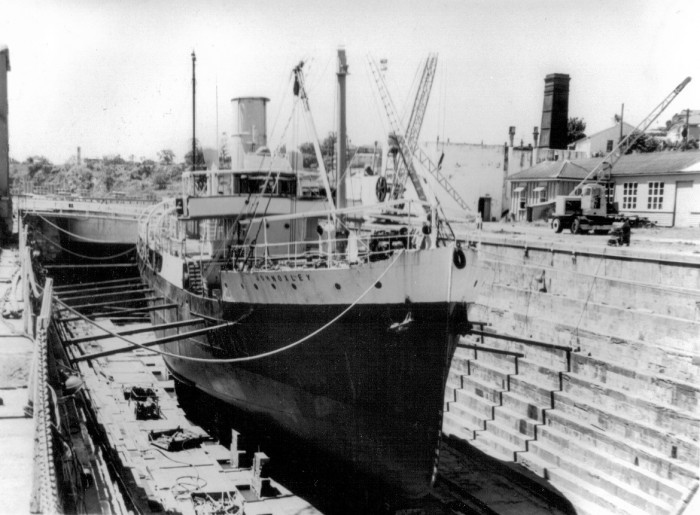
Image above shows John Oxley docked 1970 in South Brisbane Dry Dock for inspection prior to handover to Sydney Heritage Fleet and delivery voyage to Sydney.
The restoration is advanced with hull and much of the machinery basically complete – Current work continues on replacement of her steel well deck forward, engineers work on main and auxiliary machinery, piping and now repairs to the boilers have commenced.
RECENT WORK
NAVAL ARCHITECTURE and SURVEY: John Butler Designs (as project naval architect) along with 3D CAD and Stability Model have recently completed Float Study calculations – This revealed the undamaged stability for a John Oxley afloat is satisfactory, while the damaged stability, as expected, is problematic and needs more work.
John Oxley planners are also holding regular meetings with RMS officers to work through Risk Assessments and technical issues for a restored John Oxley on display with visitors and in operation with passengers. An interesting phase of this work is consultation with similar vessels in Australia and overseas as we work through this complex and difficult process.
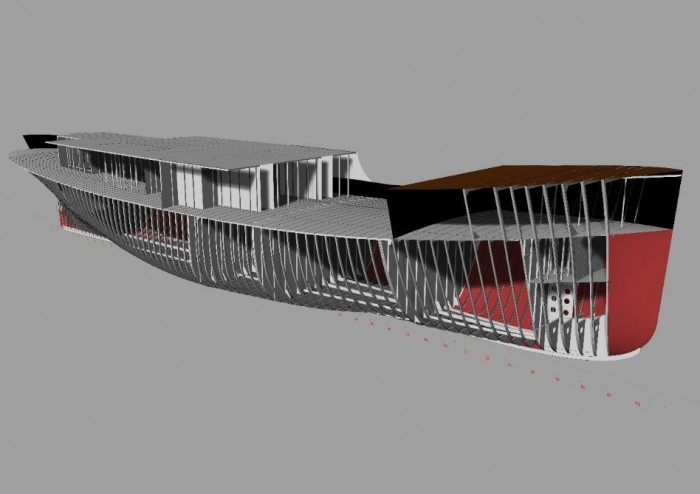
Rhino CAD 3D render of John Oxley hull model – This 3D CAD technology combined with stability software is a technology undreamt of when the original naval architecture was carried out in 1927.
FABRICATION: Fabricator Steve continues to expand the project and has recently added the skills of riveting to his repertoire.
Apprentice Alex has joined the project and brings skills, enterprise and enthusiasm to the project. This apprentice position continues to be generously sponsored.
We continue to build the workforce on the ship but always need more volunteer fabricators to cut, drill, grind and weld plus volunteer ironworkers to clean down, descale, drill and bolt, plus paint.
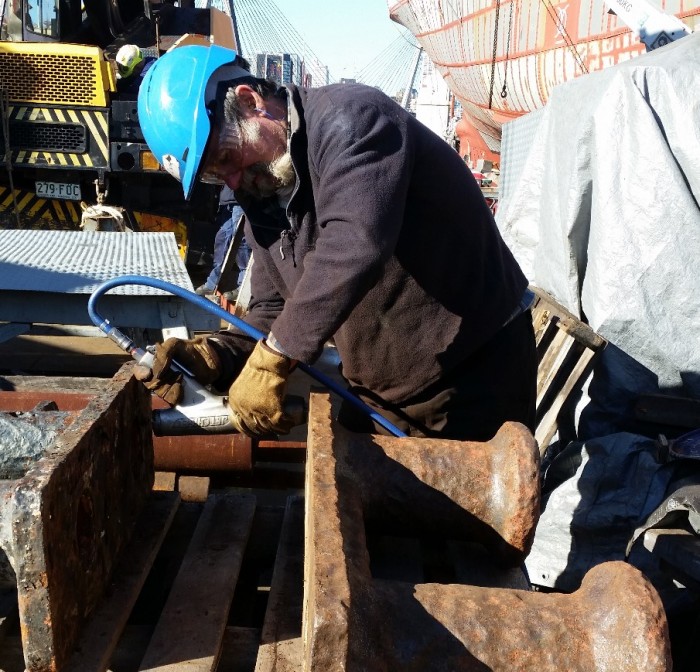
Dave needle gunning well deck mooring bitts
Boat Deck: Rainwater leaking through the boat deck caused much deterioration in cabins below, hence the hard decision was made to steel plate in this deck. Our naval architect advised that the small weight increase was acceptable and the new 8 mm. steel plate deck was laid. With the deck down, current work includes fitting the side skirt and preparing for riveting, marking off for ventilators and fittings plus installation of temporary side rails.
Main Deck: The fabrication team has completed replacement of the main deck over the boilers and bunker spaces. Team leader Tim predicts this work should be finished early 2018
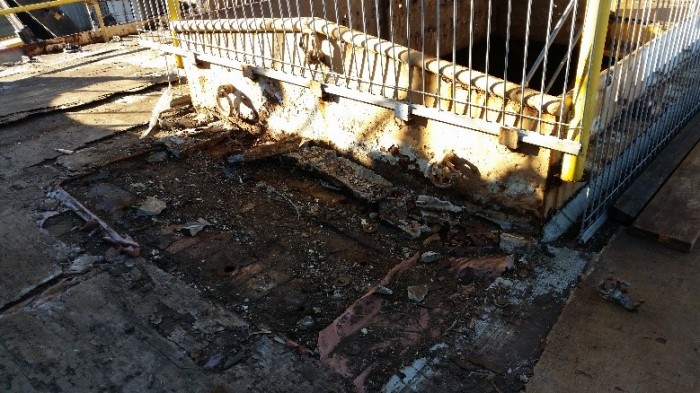
Our new fabricators have also had to acquire the skills of riveting to fasten the new steel plate deck to the deck beams. Work has now progressed forward into the well deck area over the main hold.
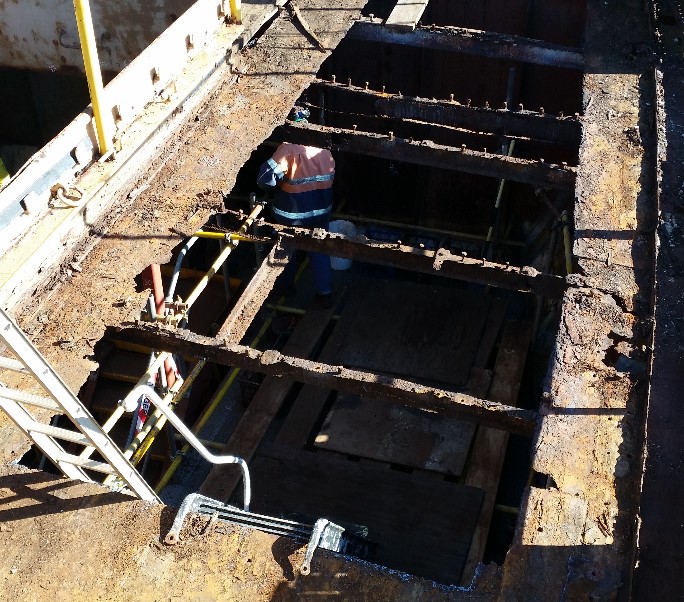 As the old deck timbers are lifted, the team can really appreciate how serious is the deterioration in the main deck beams.
As the old deck timbers are lifted, the team can really appreciate how serious is the deterioration in the main deck beams.
Replacing deck beams must take place with care to ensure shape of the hull remains the same – The hull has been braced with tie rods and then each beam will be replaced one by one. The main hatch is also an important an important structural component.
Riveting: As a skill set, riveting was learnt on the Waratah restoration back in the 1980s and further developed through restoration of James Craig.
The fabricator team on John Oxley are this year basically new people and have had to relearn these riveting skills as they work through main deck repairs.

Fabricator Steve and apprentice Alex riveting hatch coaming
Riveting teams are being built up so that more volunteers can undertake this work – A typical riveting team consists of rivet cooker + passer + holder upper + riveter.
The team must also communicate while wearing hearing protection and also perfect skills needed to quickly pass the hot rivet from furnace into the rivet hole to avoid cooling of the rivet. An improvement is use of the traditional air jack, which is preferred over the heavy dolly as the hot rivet is held more firmly in place. The air jack also avoids muscle strain for the holder upper.
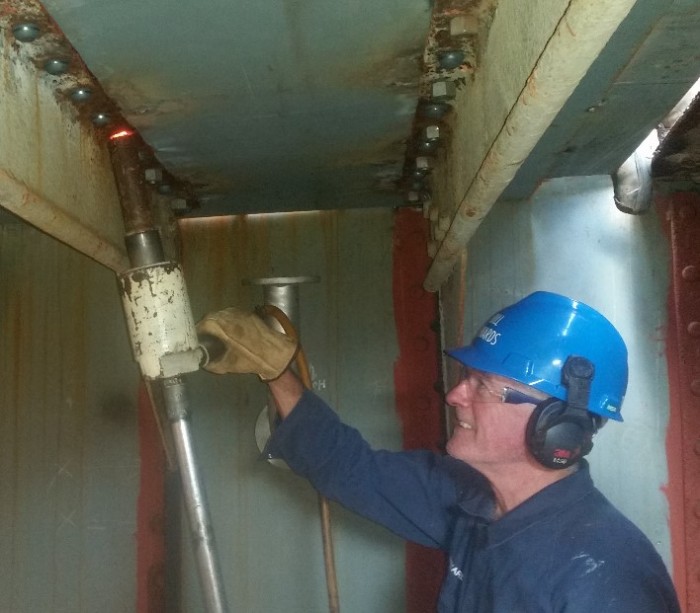
Holding up – Bill operating air jack
Workshop: The shore workshop fabrication team has already finished replacement bunker and forward hold hatches.
The main hatch has also been pre-manufactured for assembly into the new hatch beams when installed. This team also go on board to support the vessel riveting teams when needed.
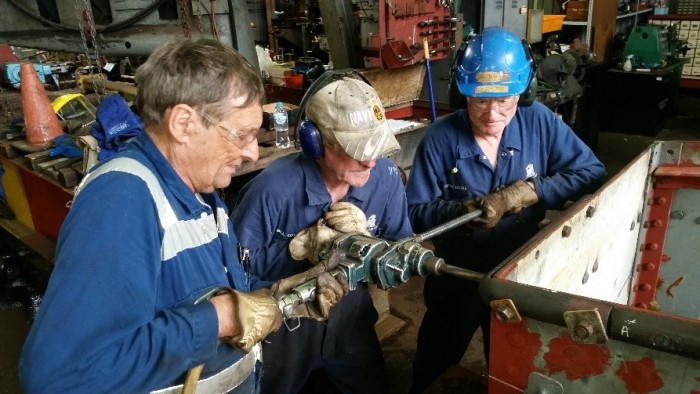
Workshop fabricators Steve, Bill and George reaming for rivets
Forward Hold: Work completed in the forward hold includes a working deck for equipment such as mooring lines and fenders – A concern was that the working deck in the forward hole was well below the access hatch, this a potential and serious risk assessment factor.
This risk is addressed through installation of a working platform/deck only about 2 metres down from the access hatch.
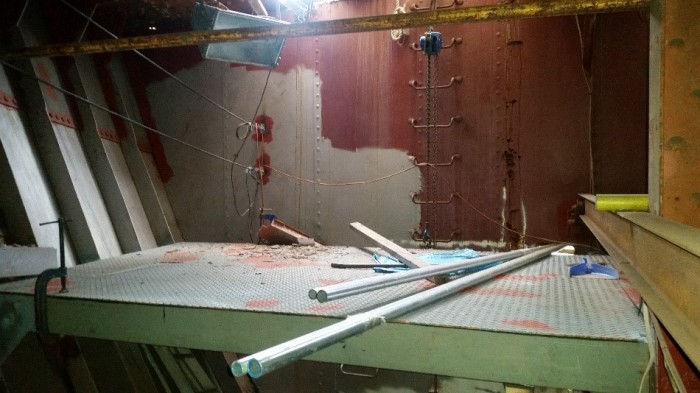
Looking aft over the new working deck in forward hold – Safety railing commenced
ENGINE ROOM: Chief engineer Garry’s engineering team has achieved much this year. Highlights have included extensive construction, galvanising and install of the bilge suction system in galvanised steel.
All auxiliary machinery is installed and now runs on compressed air for test and display purposes. An extensive task has been the painting of machinery and piping in the engine room.
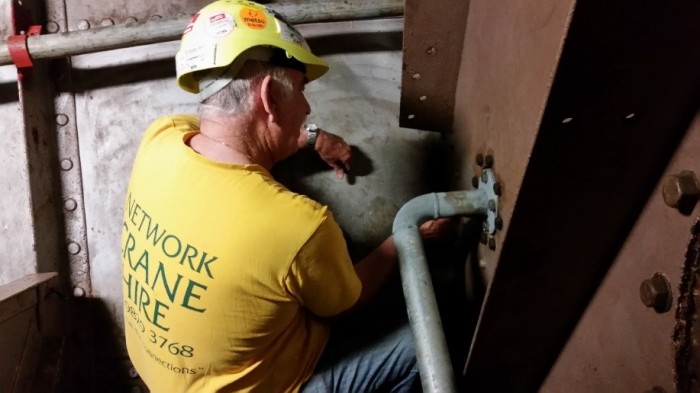
Terry installing tunnel bilge suction
WH&S procedures have been devised and implemented to enable engine room visits and a number of tours have taken place, with visitors commenting on how good the engine room is looking.
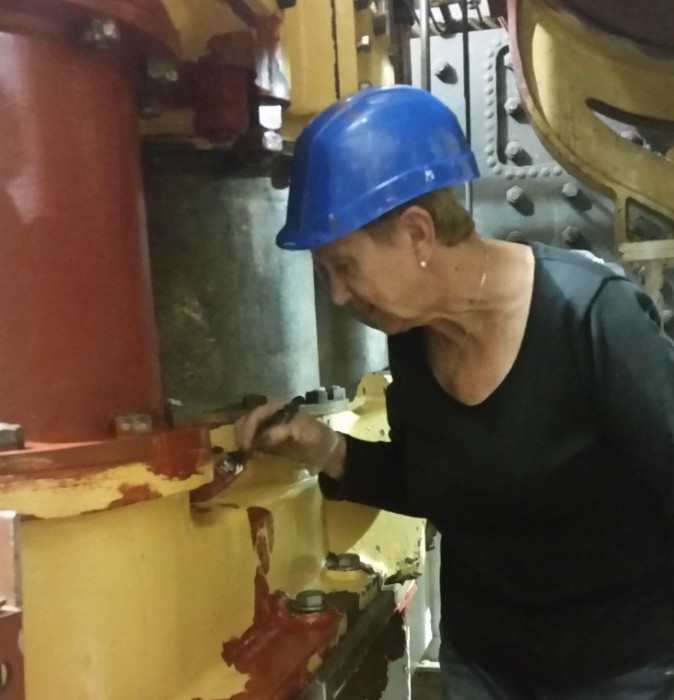
Image shows Sandy painting the air pump base.
Main engine and thrust block shaft line has been stripped and inspected – Another milestone was the completion of the barring or turning gear, which has been fitted with an electric motor, and allows weekly rotation program for the main engine.
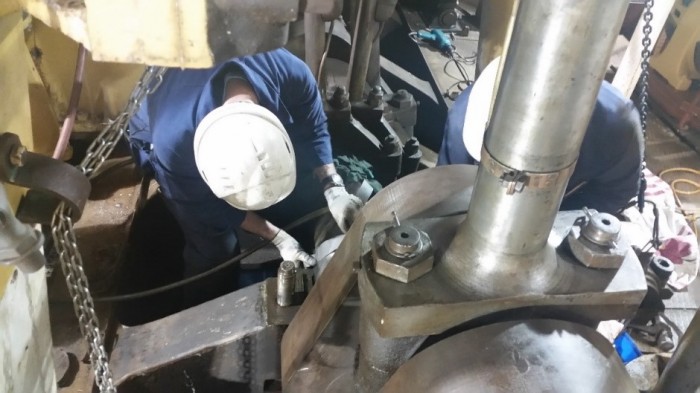
LP crank and bottom end – Engineers working on #5 main bearing
With engine room auxiliaries restored and installed, shore side attention has been directed to the windlass – This unit was stripped and reassembled and has been tested on compressed air. An interesting sideline for our woodworkers was making the hardwood shoes for the chain gypsy brakes.

Bob and John assembling windlass
ELECTRICAL: Design planning by Grant continues throughout the ship to provide for a complex array of requirements. The electricians already work on supplying construction wiring for lighting and power to the restoration. New cable trays are installed above in the engine room and a new cable tray system to run along the port side machinery spaces has commenced. This will carry power from the gen set to various parts of the ship.
AMSA have accepted diesel gen set location on the main hold tween deck and with this now locked in, planning for switchboards and cable tray runs progresses.
ELECTRICAL & NAVIGATION ELECTRONICS – Long term SHF member Brett Smith has agreed to research and determine the navigation electronic system for a completed John Oxley – The list will be used to plan out layouts for the wheelhouse and chart
110 VOLT STEAM DYNAMO SET – John Oxley’s original 110 volt direct current electrical system is not adequate to power today’s ship safety requirements, however we resolved to restore and reinstall the old steam dynamo set and slate switchboard as a working display.room.
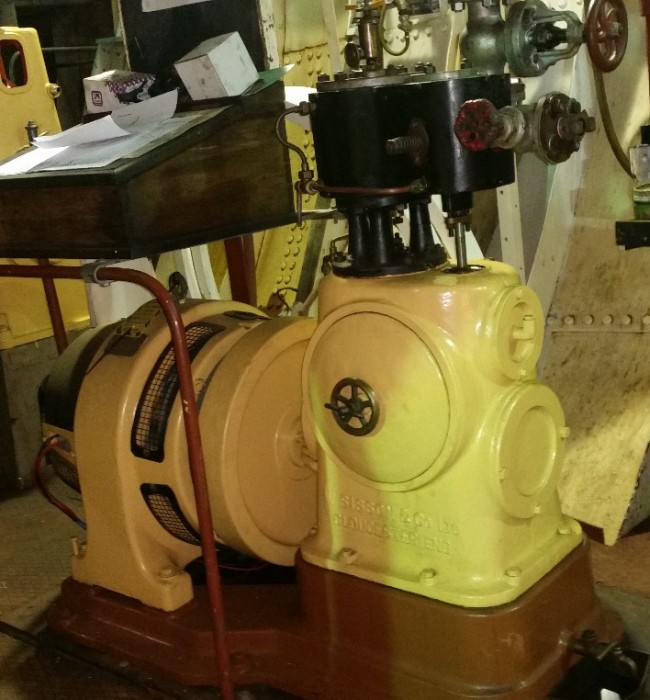
Crompton dynamo with Sisson engine freshly painted
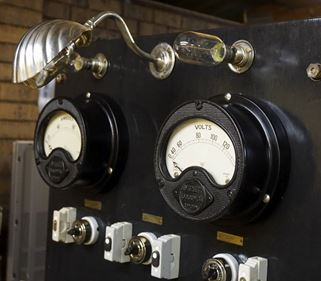 Old switchboard as restored and waiting for install. Fittings and switch bodies have been freshly Nickel plated while the old knife switches are refurbished, but will not be live – Instead modern switches will be fitted behind the board for safety of crew and visitors.
Old switchboard as restored and waiting for install. Fittings and switch bodies have been freshly Nickel plated while the old knife switches are refurbished, but will not be live – Instead modern switches will be fitted behind the board for safety of crew and visitors.
Image on the left from Gordon his handiwork on old slate switchboard now restored and ready to go back in.
DONATING: The project relies completely on some very special people who support this restoration through sponsorship and we thank them for their sustained generosity.
The project is primarily a volunteer activity with the majority of funds directed towards materials, safety equipment and consumables. A key feature of the project has always been very careful planning of expenditure to obtain the best value for all sponsor funds.
To help in this way, please call 02 9298 3888.
VOLUNTEERING: A big thankyou to our workforce. The restoration is only possible due to your enthusiasm and labour.
To join in, please arrange to visit and meet our team.
We particularly need volunteers for the metal fabrication team on the ship plus engineering types for ‘down below’ in the engine room plus woodworkers for the shipwright team. A growth area will be electricians to commence running cables and installing equipment.
PLEASE VISIT: Best days are Tuesday, Thursday or Saturday – Project is a construction site so visits must pre-arrange so that an authorised escort is available. Parking is tight so if driving, please pre-arrange through 02 9298 3888. Many of us take advantage of the close-by light rail and bus public transport.
GOODS & SERVICES: Not all can assist financially, but can you help with…
- Steel plate, angles and pipe
- Gas and welding consumables
- A second compressor for those busy days
- Nuts and bolts – BSW + UNC + Metric – larger sizes sought…
- Air and electric tools – grinders, drills
- Drills, milling cutters, countersinks, taps, dies
Contact via 02 9289 3888 or info@shf.org.au
www.facebook.com/johnoxleysteamship/
Andy Munns




